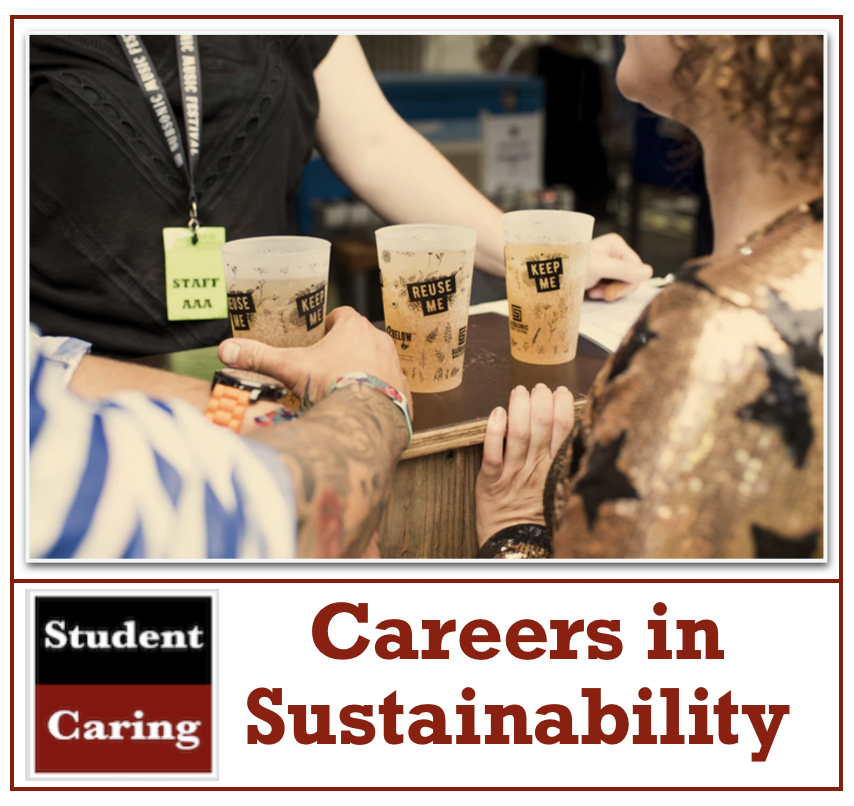
Image Source: Unsplash
The concept of sustainability is one that has moved from the fringes of society to the mainstream in recent years — and for good reason. Humans continue to negatively impact the health of the planet, and as the global population grows, the more drastic the threat becomes. Global temperatures are rising, plant and animal species are becoming extinct at a higher rate than ever before seen, and the amount of waste we produce continues to multiply.
Unless urgent action is taken, annual waste generation across the world is expected to grow from just over 2 billion tons in 2016 to 3.4 billion by 2050, reports The World Bank Group. Inadequate waste management contributes to harmful emissions, landfills that have reached maximum capacity, and even the so-called “Great Pacific Garbage Patch,” a floating collection of ocean garbage that’s twice the size of Texas.
In light of these hefty environmental issues, sustainability is an extremely relevant issue among students, educators, and those in the workforce alike. No longer can we ignore the effects of poor waste management and unsustainable business practices; instead, we must make a commitment to a more sustainable lifestyle at home, in the classroom, and at the workplace. One way you can address real-world concerns related to sustainability is by pursuing a relevant career path, such as chief sustainability officer or eco-friendly urban planner.
Pursuing a Sustainable Education
An environmental-based education serves as a foundation for implementing sustainable practices in our day-today lives. A focus on STEM subjects, in particular, is especially helpful in cultivating a passion for environmentalism and sustainability among students. STEM refers to science, technology, engineering, and mathematics, and some educators believe that STEM education encourages students to appreciate the environment.
Emphasizing STEM subjects and sustainability topics should begin at the elementary level in order to make the biggest impact. According to Concordia University, “environmental education in pre-K-12 settings can improve students’ academic performance across subjects, enhance their critical thinking skills, boost their confidence and autonomy, and increase civic engagement.”
Each of those traits and skills is likely to follow students through all of their academic pursuits, even when it comes time to choose a college major. Further, students with a passion for STEM subjects and environmental stewardship may have a leg up when it comes time to transition from university to the workforce.
Sustainability in the Workplace
At the corporate level, some ongoing issues in need of sustainable solutions include how to recycle shredded paper, how to responsibly source supply chain products free of toxic materials, and how to generally make the world a safer, more eco-friendly place via green careers. One job that allows you to improve the environmental efforts of a company from the inside is chief sustainability officer. These professionals help monitor the environmental impact of a company, and implement policies that are sustainable.
As a chief sustainability officer, you would determine how to handle recyclables on a large scale and make decisions about your company’s shredded paper policy, for example. Research is a big part of the job. You may be unaware, but most shredded paper placed in recycling bins actually ends up in landfills. That’s because small strips of shredded paper typically fall through the screens at recycling centers. But a successful chief sustainability officer will be able to find appropriate solutions to the problem, such as sending shredded documents to a professional shredding service that can properly recycle that paper waste.
And recycling policies, especially where paper is concerned, have a major impact on a company’s carbon footprint. Paper makes up 25.9% of the total national municipal solid waste (MSW) generation. It is the largest MSW material category. By diverting paper waste from landfills to recycling centers, companies of all sizes can do their part in promoting sustainability.
“Green” Jobs and the Threat of Hazardous Materials
Along with chief sustainability officer, jobs for environmentalists run the gamut from urban planners to LEED-accredited design professionals and beyond. Within the building and design industry, sustainable practices are imperative to the health of the planet and its inhabitants. Urban planners and design professionals must make good choices regarding sustainable building materials, but they must also be aware of the types of materials used in the past.
Older buildings and structures, for instance, may have been constructed with hazardous materials, such as asbestos. Once a common component in building insulation, asbestos is a fibrous silicate mineral now understood to be toxic. Specifically, asbestos exposure is linked to malignant mesothelioma, an aggressive form of cancer. While the material is no longer used in the insulation manufacturing process, older buildings may still contain asbestos, meaning that design professionals must be vigilant during the remodeling and/or demolition of older buildings.
Partly due to the nature of their work, LEED-accredited design professionals are among the highest paid within the sustainability workforce. Their annual median salary can range from $50,000 to $120,000, data indicates. Comparatively, a chief sustainability officer may earn upwards of $100,000 per year. If you want to earn a decent living while making a difference in the world and have a passion for STEAM subjects, a career related to sustainability may be a great fit.

0 Comments